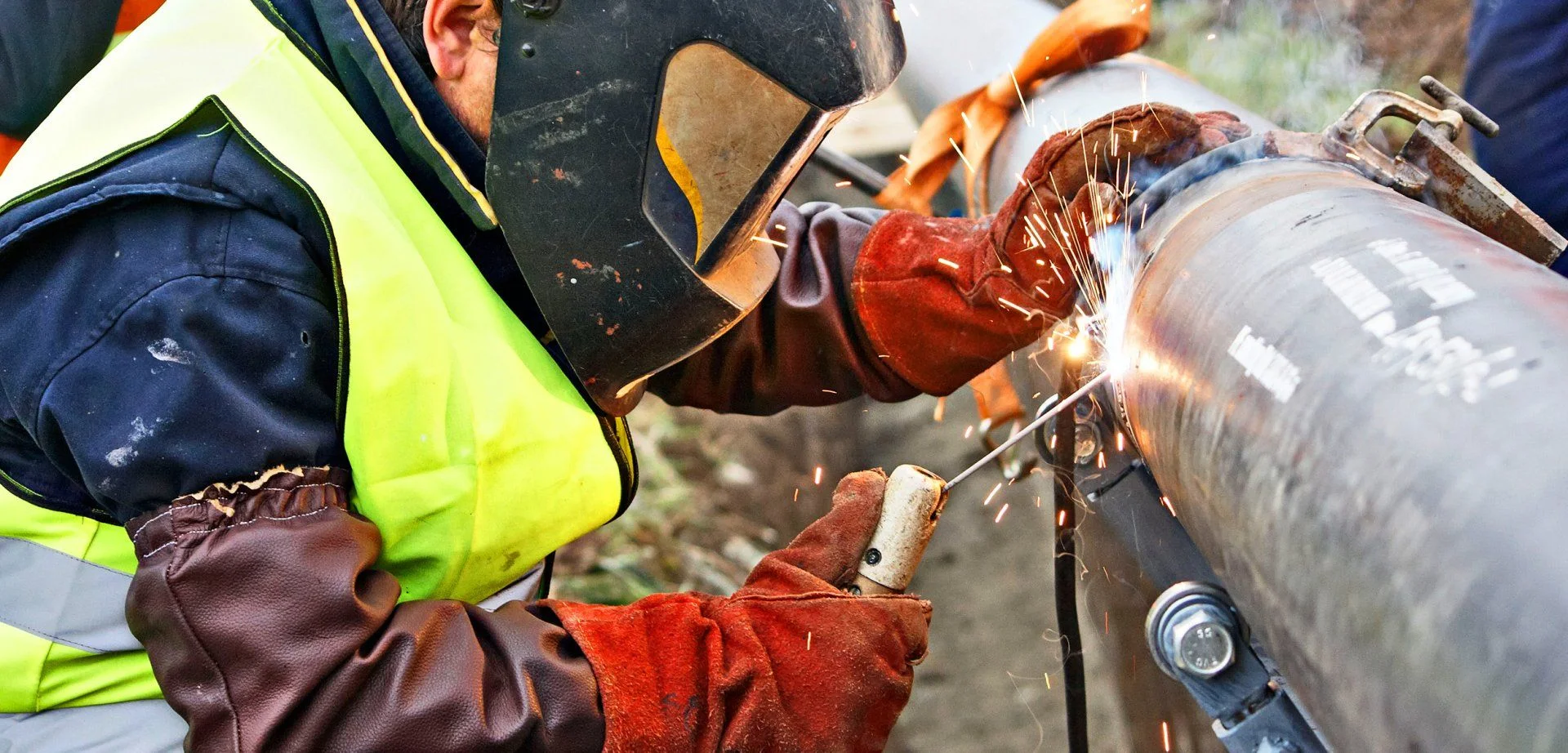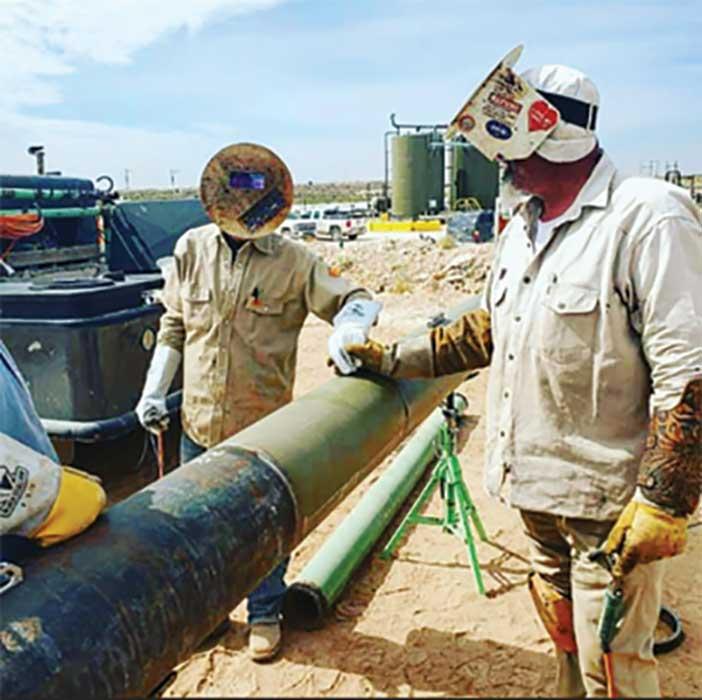
Ideal Practices for Pipeline Welding Examination: Methods, Standards, and Treatments to Achieve High Quality Guarantee and Compliance
Reliable pipeline welding assessment is important for making sure the integrity and security of critical facilities. By employing a mix of techniques such as aesthetic evaluation and advanced non-destructive screening techniques, in addition to adherence to established market criteria like those from ASME and AWS, companies can substantially boost their quality assurance procedures. Nonetheless, the implementation of these finest techniques poses various difficulties that warrant mindful factor to consider. Understanding the complexities associated with each stage of inspection is essential to accomplishing conformity and reliability in pipeline systems. What certain strategies can be employed to navigate these difficulties successfully?
Significance of Welding Evaluation
The stability of welded joints is paramount in ensuring the safety and security and integrity of pipeline systems. Proper welding strategies and detailed examination processes are crucial to avoid failings that can cause tragic occurrences, ecological damage, and death. Pipeline Welding Inspection. Welding assessment works as a safety net, determining problems such as splits, porosity, and incomplete fusion prior to they escalate right into major issues
Moreover, pipeline systems usually operate under high stress and extreme problems, making the high quality of welds even extra vital. Regulatory conformity is one more significant facet, as different standards determine the top quality guarantee processes that have to be abided by in pipe construction and upkeep. Failing to comply can lead to economic losses and legal ramifications.

The role of welding assessment extends beyond simple confirmation of workmanship; it includes the guarantee of lasting functional integrity. This includes an organized method that consists of not only visual assessments however additionally advanced non-destructive screening approaches. Ultimately, efficient welding examination is an investment in the long life and security of pipeline systems, ensuring they function as intended while reducing dangers connected with material deficiencies.
Key Assessment Methods

Visual evaluation, typically the first line of defense, permits the recognition of surface area problems such as cracks, damages, and porosity. Ultrasonic screening utilizes high-frequency acoustic waves to detect inner imperfections, using a complete evaluation of weld integrity. This non-destructive approach is especially effective for recognizing discontinuities that might not show up externally.
Radiographic screening includes using X-rays or gamma rays to generate pictures of the bonded joint, exposing inner flaws. This technique gives in-depth insights yet may call for specialized tools and security factors to consider. Finally, magnetic particle screening works for discovering surface and near-surface discontinuities in ferromagnetic products, utilizing magnetic fields and fine iron fragments.
Market Criteria and Laws
Conformity with market standards and policies is important for making sure the high quality and security of pipeline welding evaluations. These requirements supply a framework for finest methods in welding processes, materials, and inspection strategies, enabling organizations to reduce problems and boost the honesty of pipeline systems. Secret bodies such as the American Culture of Mechanical Designers (ASME), the American Welding Society (AWS), and the International Company for Standardization (ISO) state guidelines that are commonly acknowledged and embraced within the sector.
In the USA, laws from the Pipeline and Hazardous Materials Safety And Security Management (PHMSA) regulate the safety of pipe operations, mandating rigorous inspection methods. These requirements not only offer to secure public safety discover this and the setting however also make certain conformity with legal and legal obligations. Adherence to the pertinent codes, such as ASME B31.3 for process piping, is essential for keeping operational performance and regulative conformity.
Additionally, continual updates and modifications to these standards Full Report show technical advancements and advancing market practices, highlighting the demand for organizations to remain informed and train workers as necessary. Ultimately, durable conformity with recognized criteria fosters count on and integrity in pipeline facilities, guarding both assets and stakeholders.
Reliable Inspection Procedures
Efficient examination procedures are important for recognizing possible defects in pipeline welds and making sure the total honesty of the system. A systematic method to examination encompasses a number of crucial stages, including pre-weld, in-process, and post-weld examinations. Each phase plays an important function in keeping quality guarantee.
Throughout pre-weld inspection, it is vital to assess the materials and joint configurations, guaranteeing compliance with project specifications. In-process assessments include checking welding strategies and criteria, such as warmth input and take a trip speed, to avoid problems from occurring. This phase permits for real-time changes to welding methods.
Post-weld evaluations include non-destructive screening (NDT) strategies like radiography, ultrasonic testing, and magnetic particle screening. These techniques help spot internal and surface area problems that could compromise the pipe's performance. Documentation of all examination tasks is critical, offering a traceable document that supports compliance with sector requirements.
Training and qualification of assessment workers further boost the efficiency of these procedures. By sticking to a structured assessment protocol, companies can mitigate threats, guarantee conformity, and eventually supply pipelines that fulfill strict safety and security and performance needs.
Common Obstacles and Solutions
Pipeline welding assessment presents numerous common obstacles that can impact the top quality and security of the final item. One significant obstacle is additional hints the variability in welding strategies and materials, which can cause inconsistent weld high quality. To resolve this, it is important to develop standardized procedures and training for welders, ensuring a consistent method throughout projects.

Ecological factors, including temperature and humidity, can likewise influence the welding procedure, potentially causing cracks or incomplete blend. Carrying out regulated environments and adhering to pre-weld procedures can reduce these dangers.
Final Thought
Finally, the execution of ideal techniques for pipe welding examination is crucial for ensuring quality guarantee and conformity with sector criteria. A thorough method, incorporating different methods such as aesthetic, ultrasonic, and radiographic screening, facilitates the identification of problems throughout all stages of the welding process. Pipeline Welding Inspection. Adherence to developed regulations and effective evaluation treatments not only boosts the reliability and security of pipeline systems yet likewise alleviates risks linked with welding flaws, thus promoting total functional integrity
Conformity with market standards and regulations is vital for making certain the high quality and safety of pipe welding assessments. These standards provide a structure for finest techniques in welding procedures, products, and assessment techniques, permitting companies to minimize issues and improve the integrity of pipe systems.In the United States, policies from the Pipe and Hazardous Materials Safety And Security Administration (PHMSA) govern the safety and security of pipeline procedures, mandating rigorous examination protocols. A systematic technique to evaluation incorporates several essential stages, including pre-weld, in-process, and post-weld examinations.In conclusion, the application of ideal practices for pipeline welding assessment is important for making sure top quality assurance and compliance with market requirements.